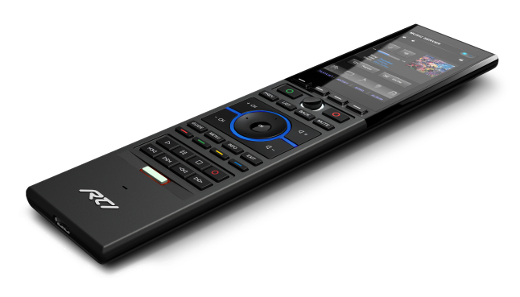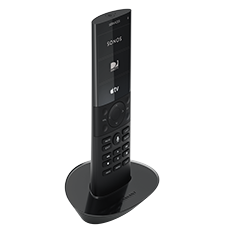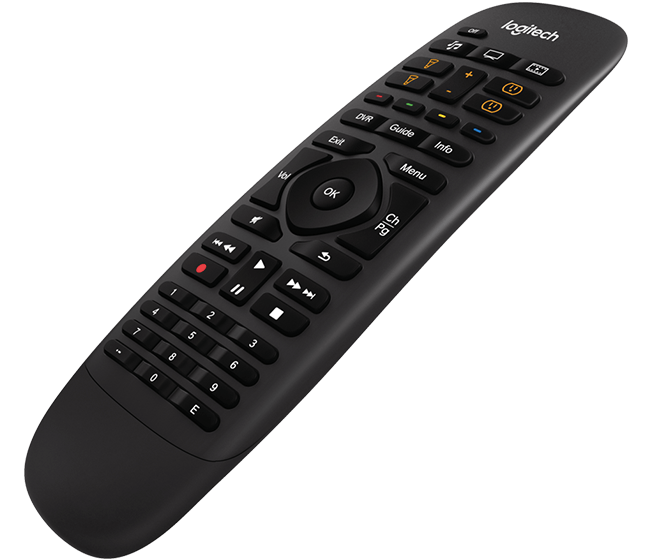
Omid’s Law: Should We Embrace The Universal Remote For Controlling Our Homes?
Most people have probably never directly paid for a remote control, but find that they have loads of them down the side of the sofa, or lined up on the coffee table anyway. In fact I wouldn’t be remotely surprised to find at least 4 or 5 devices in most households that were supplied with their own free remote.
Wait, which buttons do I need to press to watch a Blu-Ray?
There tends to be one person in the household who knows enough about the various remotes and their AV setup to get it working. The very meticulous order in which specific buttons need to be pressed on certain remotes needs to be taught to every member of the household, and sometimes even to staying guests, even to just “turn that rubbish down”.
This one person has great power, but thrust upon them is great responsibility that they perhaps never wanted. As a reader of this, chances are that one person is you. You are not alone.
What’s the solution?
Of course, Loxone has a solution for this, scrap all of your remotes and just use the virtual remote on the Loxone app. All you now need is a mobile phone or tablet, problem solved right?
Not quite.
Controlling your AV system through your app is great to an extent, but when it comes to flicking through the channels and program guides to find something that is not reruns of 90s TV programmes on Dave, tapping on a tablet becomes annoying and laborious. It is the constant looking down, pressing a button and then looking up again.
I tried making this work for a while, and although it feels somewhat cool when there are guests around, I just miss the feel of cheap rubber knobs.
The Rise Of The Universal Remote?
Enter the Universal Remote: one remote to rule them all, apparently.
Universal remotes have been around for a long time, but deliver a real mixed bag of user experience. Ranging from setup complexity requiring some form of a technical degree, to providing a rash of buttons, equivalent to that of a flight cockpit, just to watch Bargain Hunt.
Having an automation system to simplify your life at home does not marry well to having a highly complex remote.
 In the same breath, there has been a trend in recent years for smart remotes, where screens have been implemented to enhance the user experience. Unfortunately, it seems that in reality, most of these products are simply a very expensive channel-changer.
In the same breath, there has been a trend in recent years for smart remotes, where screens have been implemented to enhance the user experience. Unfortunately, it seems that in reality, most of these products are simply a very expensive channel-changer.
It seems the goal has been to add functionality without adding more physical buttons. Instead, you now have various layers of menus that can do things your remote has traditionally not been able to such as controlling your lights, heating, and even speaking to the person at the door through an intercom.
Sounds great initially, but if you have spent any amount of time with these remotes, you will find that as novel as it may seem initially, they seem to add a mountain of complexity (and usually large costs) to something that has always been a simple given.
There are further useful innovations, such as voice control, that genuinely brings something useful to the (coffee) table. That’s right, you can speak to your remote control.

There is an inherent simplicity in only needing to tell your system “Watch a movie.”, and it takes care of all the technicalities for you, including dimming the lights and closing your blinds.
No instructions, no menu, no interpretation of symbols needed. At the risk of getting into trouble, even my other half can work it ;).
Both a screen and voice control seem like great steps into turning your somewhat basic, single-purpose remote control, into a multi-interfacing, swiss army knife to control your home.
So what’s the problem?
Unfortunately, the extra complexities they bring make them a step too far for me.
The tipping point comes in the form of battery life and cost.
If nothing else, having to charge the thing frequently (daily in some cases), or ensuring it is returned to a cradle is too much of a nuisance. Especially when returning home and realising the battery is flat, and you now have to hunt down your regular remotes to get the TV on.
In addition, having to pay more than four times the value of my mobile phone for the privilege of this is frankly unacceptable.
And the solution?
Options are aplenty, but my off-the-shelf favourite is the Logitec Harmony Companion.

A relatively small remote, with enough buttons to perform any regular TV function. This remote does not rely on IR, so no need to aim at receivers to make it work, but uses Bluetooth to speak to an accompanying Hub, which in turn relays the IR signals to your AV devices.
It also adds a layer of integration into your home automation system through its dedicated ‘mode’ and control buttons at the top, which uses the Hub’s network connection to communicate with various devices.
For about £100, you get everything you would practically need in a remote, and with a battery that will last about a year with normal use, no charging cradle needed.
So there you have it. At the moment, the chances of finding a user-friendly control device that enhances rather than infuriates, is quite, well, remote. But as you know, things never stand still for long and my hope is that in the not-too-distant future, we’ll have a smart remote truly deserving of the name.
If you’re keen to weigh in on the discussion (as I’m sure many of you are), please leave a comment below, always happy to see different opinions.
